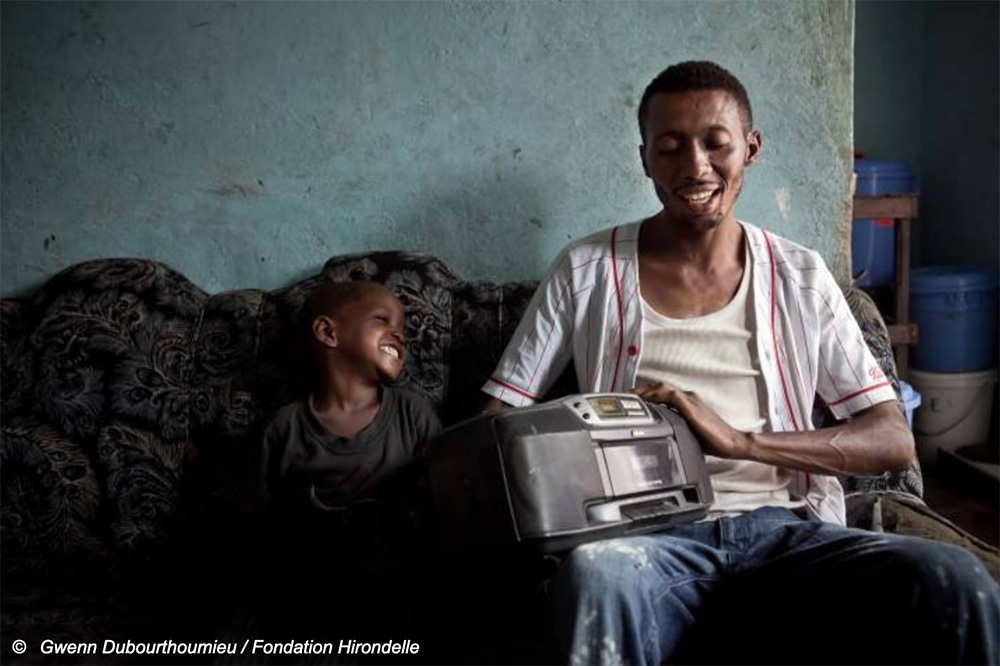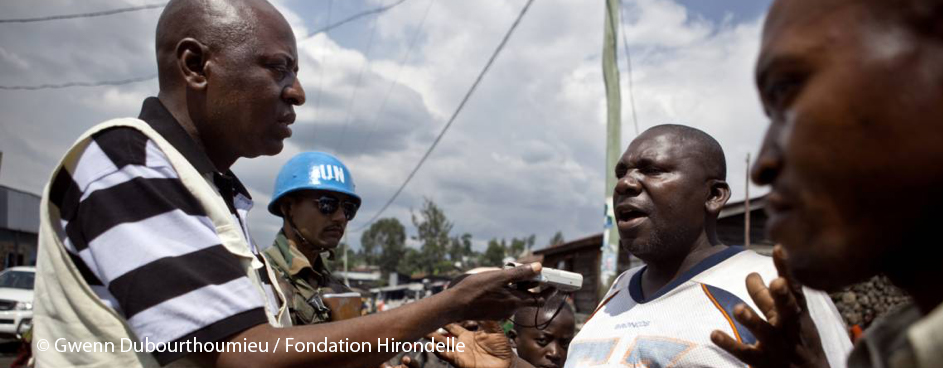
Working in the media sector in fragile and protracted crisis contexts – marked by state failure, strong inter-community and intra-community tensions, and a very unfavourable socioeconomic situation – creates a tension between long-term objectives around strengthening media actors, and urgent needs of vital information for the population. Donors are then at the heart of the nexus. Media projects aim to achieve both long-term development objectives (by contributing to strengthening the media sector in a country and building a peaceful society) and address urgent needs in terms of life-saving information. This tension between the urgency of a crisis context, sometimes humanitarian, and the prospect of long-term change is reconcilable with the production of information by relevant partners to meet people’s immediate needs, while contributing to systemic and sustainable changes in society. Independent media are equally important in stable as in fragile and conflict-affected contexts. Yet we need to specifically look at these difficult cases, and differentiate challenges stemming from authoritarian governance from those stemming from conflict-affected contexts and from humanitarian crises. Indeed, the approaches and potential actors to engage with in these three situations are different, even if some of the consequences (in terms of access to information and the security of journalists) might be the same. In these contexts, it is important to include considerations on the position and role of the media in the design of peace process strategies and humanitarian responses, and to bring media actors to the table when identifying needs and designing actions. This requires a holistic analysis looking at the six segments of the media environment and identifying in which segments an action is possible politically and/or security-wise. As a donor, SDC needs to have realistic expectations, and know that interventions in only one sphere of the media environment will have limited results, and could even be counterproductive (for example, providing equipment to unprofessional media only in polarised or fragile environments without the necessary training in ethics and journalism skills may have a negative boomerang effect). The local media sector is usually the mirror of society. This means that in authoritarian, conflict-affected contexts or in situations of humanitarian crisis, the media sector is often fragile, divided, economically dependent on fighting powers, and lacking professional capacity. In countries with authoritarian rule and shrinking public space, independent media might not be allowed to exist, and journalists are threatened or even put in jail or killed. Ambitions in such countries should be very limited, and the programme flexible to adapt to rapid changes and high pressure.
In spite of the current trends in communication being increasingly oriented towards digital with its endless possibilities for interaction, radio remains a major communication medium. Fondation Hirondelle and the ICRC have produced a guide to radio communication in humanitarian contexts. It is presented in Bamako on the occasion of World Radio Day, on February 13.
|

|
Potential interventions
Common to the different contexts:
Map and monitor dynamics and sources of information and misinformation/disinformation and hate speech online and offline.Support the capacity of a core group of the most credible and balanced media and journalists to better recognise and counter misinformation and disinformation online and offline through the production and broadcasting of reliable and factual information, and inclusive and balanced dialogue. This can be promoted with:- training on basic rules of professional and ethical journalism, training on relevant thematic issues in relation to the core grievances of the local populations;
- support for the capacity of those media actors, to hold national and local debates promoting inclusive, fair and constructive dialogue between decision-makers and affected populations;
- support to technical capacities: access to electricity, production and broadcasting equipment, connectivity, and according to the assessment of information consumption habits of targeted audiences, support the migration of offline media to digital media spaces;
- training and protection for journalists and media actors to face the specific risks posed by these contexts. The training could address safety measures to adopt when reporting from crisis zones, digital security, how to deal with psycho-trauma, understanding the legal environment, etc.
Support media and information literacy programmes. The beneficiaries of such programmes could be decision-makers, CSOs, parties to the conflict, media actors themselves, and the general population.
Specific to fragile and conflict-affected settings:
Organise joint training workshops between journalists in exile and journalists from the country to build ties, contacts, and trust in the production of content.Support regional media initiatives and media in exile. There are many examples of supporting media in exile (for example, Myanmar, Burundi, Iran ,Eritrea), offering alternatives when one cannotwork from inside the country, provided that they are able to overcome constraints in terms of verification of the facts and information, security, and accessibility to the media by the most marginalised population groups.Use the windows of opportunity opened by general legal reforms and the promotion of the rule of law to improve the specific laws and institutions regulating the media sector.Support UN media or other regional or internationally backed initiatives promoting informationto the population and platforms for dialogue. This approach should be based on a proper assessment of existing local media capacities and, as far as possible, from the perspective of strengthening those existing local media capacities and anchoring this work in the longer term.
Specific to humanitarian crises:
Support the local production and broadcasting of public service messages in local languages promoting awareness on humanitarian law and human rights and providing information on basic needs, on issues such as food, health, displacement and security.

Issues to keep in mind
To design sound media strategies in both peace-building and humanitarian interventions, two different approaches should be distinguished:- Journalism: production of reliable, independentand factual contents for all parties; creation of a safe space for public dialogue and exchange of points of views. Some organisations might call this ‘peace journalism’ or ‘conflict-sensitive journalism’ (see glossary, Annexe 2). Ultimately, what counts is that the rules of responsible and professional journalism are respected.
- Strategic communication: production of rational and/or emotional media content (e.g.through messages, fiction, drama, art) designed as counter-narratives. The goal here is not only to inform but to convince and replace a pre-existing discourse. Even though the approach of strategic communicators might move from top-down to more participatory processes, the ultimate goal is to persuade the audiences of the disseminator’s point of view. This approach is not a balanced approachand should therefore not be confounded with independent media development.
According to the context, the need to promote dialogue might be particularly acute between antagonist groups in fragile and conflict-affected settings; or between policy makers and affectedc ommunities in a humanitarian crisis. Nevertheless, the role of the media remains the same: it is to create a space for inclusive and fair dialogue on core grievances and constructive, locally owned solutions.The World Humanitarian Summit 2016 in Istanbul called for more two-way communication between humanitarian actors and beneficiaries using (for instance) local media, as well as more accountability towards local populations. The CDAC Network offers a list of specialised actors and guidance forworking on communication with affected communities.Finally, also in these contexts, it is necessary to measure the effects of programmes. The eight Caux Principles on the impact of the media in conflict zones are relevant here (Arsenault, Himelfarband Abbott 2011).
 
Additional resources
For a media intervention to impact conflict dynamics, it
is necessary to understand the characteristics of digital communications and their relationship to conflict analysis and response, to know who the stakeholders are, how many need to be reached, and what kinds of media to use. Key Reading Document Internews 2014 Dr. Eran Fraenkel Further readings on CVE and hate speech.
The Global Forum for Media Development (GFMD), a not-for-profit, Belgian registered ASBL, is a network of journalism support and media assistance groups established in 2005 in Amman, Jordan. The briefing is designed principally for policymakers working to support development in fragile states. It draws on and summarises some of the conclusions drawn from earlier policy briefings published by BBC Media Action on the role of the media and communication in four fragile states – Afghanistan, Iraq, Kenya and Somalia. Key Reading Document BBC 2013
|
